




Dealing with mould on walls can be a frustrating and challenging task. Aside from being unsightly, mould can also have negative effects on your health. It’s important to address mould growth as soon as possible to prevent it from spreading and causing further damage. In this step-by-step guide, we will discuss effective ways to clean mould off walls and restore the cleanliness and safety of your living space.
Step 1: Identify the problem areas
Mould growth is often found in areas with high humidity or moisture, such as bathrooms, kitchens, and basements. Look for discoloured patches on the walls or a musty odour, as these are common signs of mould growth.
Step 2: Prepare the necessary tools and materials
You will need protective gear, such as gloves and a mask, to avoid direct contact with mould spores. Gather cleaning supplies such as a scrub brush, sponge, bleach or vinegar, and water.
Step 3: Remove mould from the walls
Start by opening windows or using a fan to improve ventilation. Mix equal parts bleach (or vinegar) and water in a spray bottle. Spray the solution onto the mouldy areas and let it sit for a few minutes. Scrub the walls using a brush or sponge, applying firm but gentle pressure. Rinse the area with clean water and dry thoroughly.
Step 4: Address the underlying cause
Mould growth is often a sign of excess moisture or a water leak. It’s important to identify and fix the underlying cause to prevent future mould growth. Repair any leaks, improve ventilation, or invest in a dehumidifier to control humidity levels.
Step 5: Prevent future mould growth
Regularly clean and dry the walls to prevent moisture build-up. Use a mildew-resistant paint or primer to provide an extra barrier against mould. Keep the humidity levels in your home under control and address any signs of excess moisture promptly.
By following these step-by-step instructions, you can effectively clean mould off walls and maintain a healthy and clean living environment.
Understanding the Hazards of Mould
Mould is a type of fungus that can grow in damp and humid environments. It reproduces by producing tiny spores that can easily become airborne and spread to other areas of your home.
While some types of mould are harmless, others can pose serious health risks. When mould spores are inhaled, they can cause allergic reactions, respiratory problems, and worsen existing health conditions. The severity of these risks depends on the individual’s sensitivity to mould and the amount of exposure.
Health Risks of Mould Exposure
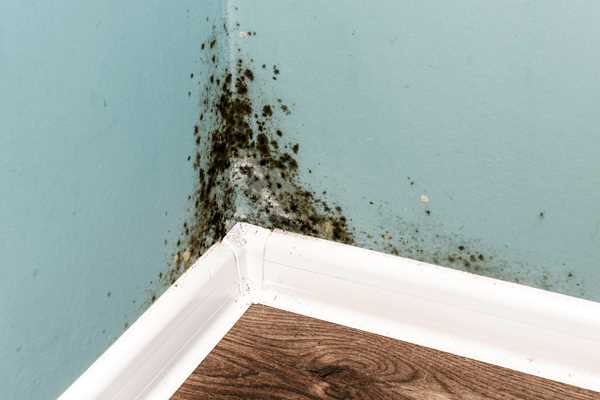
- Allergic Reactions: For individuals with allergies, exposure to mould spores can trigger symptoms such as sneezing, coughing, itchy eyes, and skin rashes.
- Asthma Attacks: People with asthma are particularly susceptible to mould-related health issues. Inhaling mould spores can lead to asthma attacks, shortness of breath, and chest tightness.
- Respiratory Infections: Some types of mould, such as black mould (Stachybotrys chartarum), can produce toxins that can cause respiratory infections, especially in individuals with weakened immune systems.
- Chronic Fatigue: Prolonged exposure to mould can lead to chronic fatigue syndrome, characterized by persistent exhaustion and reduced cognitive functioning.
- Mycotoxicosis: In rare cases, exposure to certain mould species and their toxins can result in mycotoxicosis, a severe illness that affects multiple organ systems.
Preventing Mould Growth
The best way to protect yourself and your home from the hazards of mould is to prevent its growth in the first place. Here are some preventive measures you can take:
- Keep your home well-ventilated and ensure proper air circulation.
- Control humidity levels by using dehumidifiers or air conditioners.
- Fix any leaks or water damage promptly.
- Ensure proper insulation to minimize condensation.
- Clean and dry any damp surfaces or materials within 24-48 hours.
- Use mould-resistant products in areas prone to moisture, such as bathrooms and basements.
By understanding the hazards of mould and taking preventive measures, you can create a healthier and safer living environment for you and your family.
Why Mould on Walls Can Be a Serious Problem

Mould on walls is not only unpleasant to look at, but it can also be a serious problem for several reasons:
- Health Risks: Mold can release spores into the air that can cause allergic reactions and respiratory problems, especially for individuals with asthma or weakened immune systems.
- Structural Damage: If left untreated, mould can gradually eat away at the surfaces it grows on, including walls. Over time, this can lead to weakened structures and, in severe cases, even structural collapse.
- Increased Humidity Levels: Mold thrives in moist environments, and its presence on walls is often an indication of excessive moisture. This can be caused by leaks, condensation, or poor ventilation. In turn, high humidity levels can contribute to a variety of issues, including damage to furniture, peeling wallpaper, and musty odours.
- Deterioration of Indoor Air Quality: When mould grows on walls, it releases volatile organic compounds (VOCs) that can degrade the quality of indoor air. Breathing in these compounds over time can lead to a host of health problems, including headaches, dizziness, and nausea.
- Aesthetical Concerns: Mould stains are unsightly and can significantly impact the appearance of any space. It can be particularly problematic in areas like bathrooms, kitchens, or basements where moisture levels are higher.
Given the potential risks associated with mould on walls, it is essential to address the issue promptly and take preventive measures to avoid future growth. Regularly inspecting for signs of mould, fixing leaks, improving ventilation, and controlling humidity levels can go a long way in preventing the recurrence of this problem.
Preparation for Cleaning Mould Off Walls
Mould can be a health hazard and also unsightly. Before you start cleaning mould off your walls, it is important to take the necessary steps to ensure your safety and effectiveness of the cleaning process. Here are some steps to prepare for cleaning mould off walls:
1. Gather the necessary supplies:
- Disposable gloves
- Protective eyewear
- N95 respirator mask
- Plastic sheets or drop cloths
- Bucket
- Water
- Mild detergent or mould cleaner
- Scrub brush or sponge
2. Prepare the area:
Before you start cleaning, you need to protect the surrounding area from mould spores and cleaning products. Cover the floor and furniture with plastic sheets or drop cloths. This will prevent any mould spores or cleaning solution from coming into contact with other surfaces.
3. Ventilate the room:
Mould can release harmful spores into the air when disturbed, so it is important to ventilate the room properly during the cleaning process. Open windows and doors to let fresh air in and provide a way for the spores to escape. You may also consider using fans or dehumidifiers to aid in air circulation and drying.
4. Protect yourself:
Mould can cause allergic reactions and respiratory issues, so it is important to protect yourself before starting the cleaning process. Wear disposable gloves to protect your hands, protective eyewear to shield your eyes, and an N95 respirator mask to prevent inhalation of mould spores. These precautions will help minimize your exposure to mould and keep you safe.
5. Mix the cleaning solution:
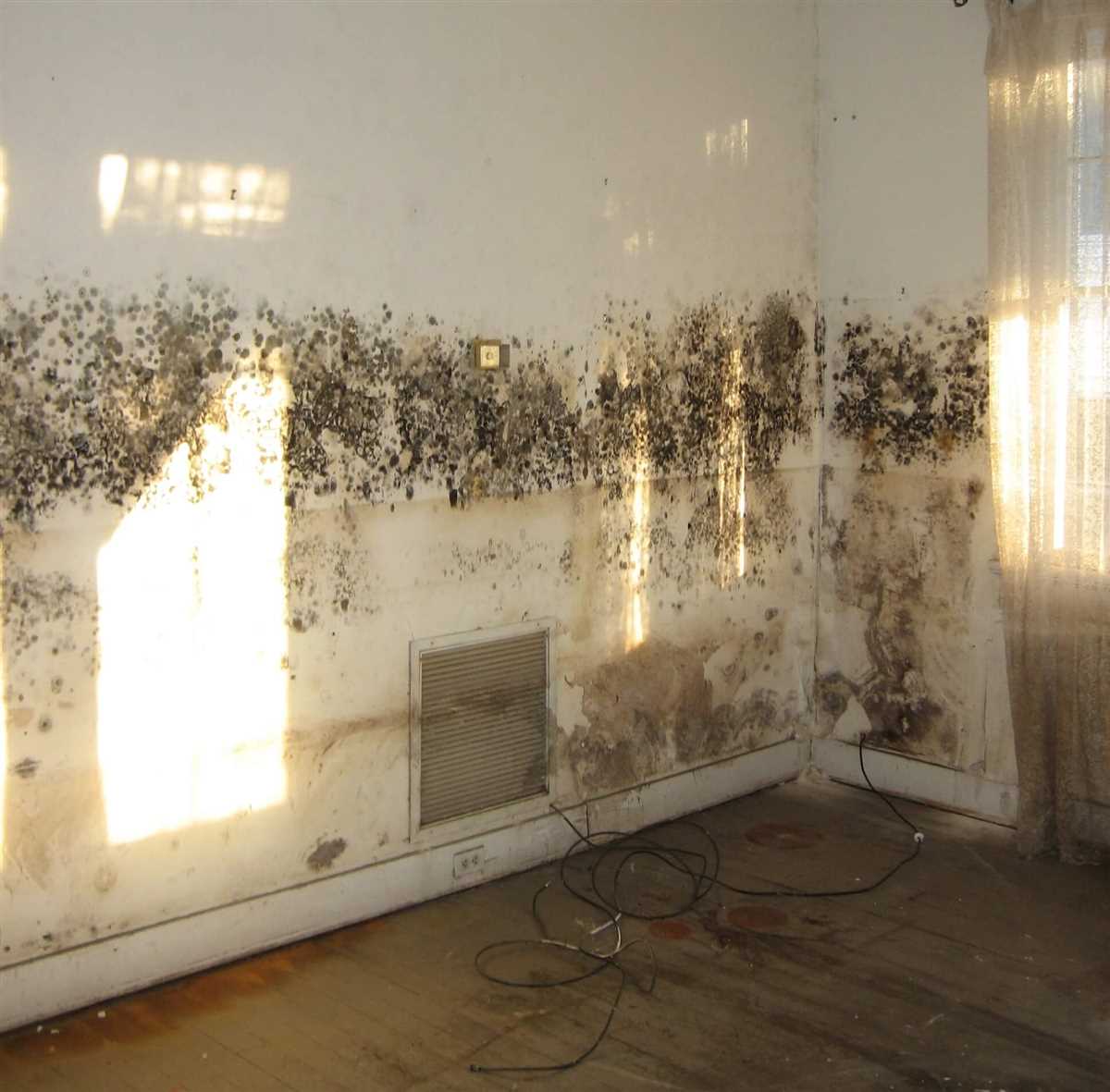
In a bucket, mix water with a mild detergent or a specialised mould cleaner according to the manufacturer’s instructions. Avoid using bleach as it may not effectively kill the mould spores and can damage the wall’s surface.
6. Test a small area:
Before proceeding with cleaning the entire wall, it is a good idea to test the cleaning solution on a small, inconspicuous area. This will help ensure that the solution does not cause any damage or discolouration to the wall’s surface.
7. Remove any loose mould:
Prior to applying the cleaning solution, use a brush or sponge to remove any loose mould from the wall’s surface. This will help the cleaning solution to penetrate more effectively and ensure a thorough cleaning.
8. Establish a cleaning plan:
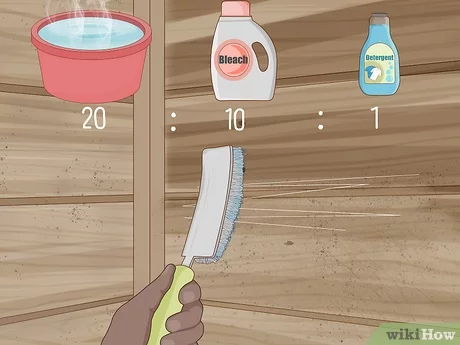
Determine the best method for cleaning the mould off the walls based on the type of surface. Different surfaces may require different cleaning techniques, such as gentle scrubbing for painted walls or using a scraper for non-porous surfaces. Having a cleaning plan in place will help you achieve the best results.
By following these preparation steps, you will be ready to effectively clean the mould off your walls while ensuring your safety and the cleanliness of your living space.
Gathering the Necessary Cleaning Supplies
Before you start cleaning the mould off your walls, you’ll need to gather the necessary cleaning supplies. Here is a list of items you will need:
- Gloves: Rubber or latex gloves to protect your hands from the cleaning solutions and mould spores.
- Protective clothing: Wear old clothes and shoes that you don’t mind getting dirty or potentially stained.
- Eye protection: Safety goggles or glasses to protect your eyes from the cleaning solutions and mould spores.
- Mask: A respiratory mask or respirator to prevent inhaling mould spores or cleaning solution fumes.
- Bucket: A bucket or basin to hold the cleaning solutions and water.
- Liquid dish soap: Mild liquid dish soap is effective for removing mould from walls.
- Vinegar: White distilled vinegar can be used as an alternative to dish soap.
- Bleach: Chlorine bleach is a powerful mould killer, but should be used with caution and only on non-porous surfaces.
- Scrub brush: A stiff-bristled brush or sponge to scrub away the mould.
- Old towel or rags: Use these to dry the walls after cleaning.
- Plastic drop cloth or tarp: Cover the surrounding area with a drop cloth or tarp to protect it from splashes and spills.
- Step ladder: If the mould is higher up on the wall, you may need a step ladder to reach it.
- Ventilation: Ensure proper ventilation in the area by opening windows or using a fan to help dissipate fumes.
Once you have gathered all the necessary cleaning supplies, you’re ready to move on to the next step, preparing the area for cleaning.
Protective Measures Before Starting the Cleaning Process
1. Wear Protective Clothing
Before you start cleaning mould off your walls, it is important to protect yourself by wearing appropriate clothing. This includes long sleeves, long pants, gloves, and closed-toe shoes. Mould spores can be harmful if they come into contact with your skin, so it’s essential to cover up as much as possible.
2. Use Safety Goggles
In addition to wearing protective clothing, it is advisable to wear safety goggles to shield your eyes from any mould spores or cleaning solution that may splash during the cleaning process. Safety goggles will help prevent any potential eye irritation or injury.
3. Ensure Adequate Ventilation
Before you start cleaning, make sure the area is well ventilated. Open windows and doors to allow fresh air to flow through the room. This will help prevent the accumulation of fumes from cleaning agents and improve air quality.
4. Turn off HVAC Systems
Prior to cleaning, it is important to turn off any heating, ventilation, and air conditioning (HVAC) systems in the room. This will prevent the spreading of mould spores throughout the building via the air system.
5. Contain the Area
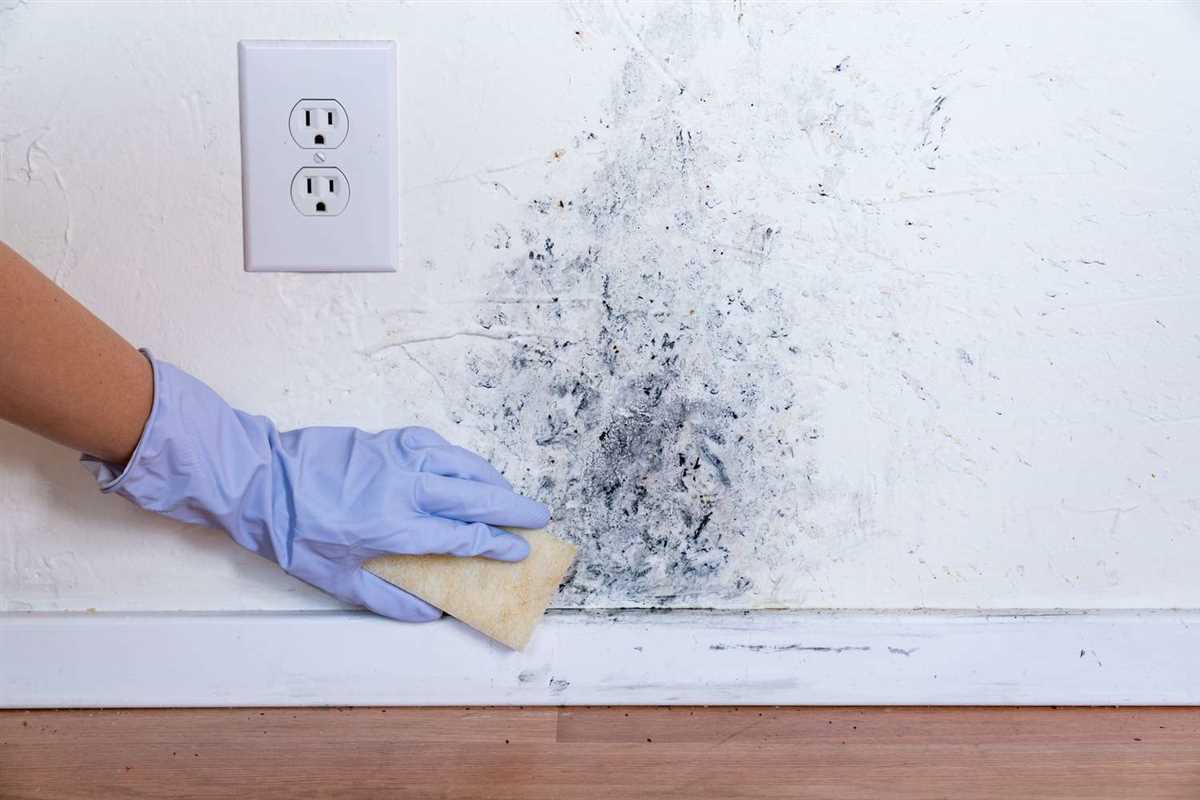
To minimize the risk of spreading mould spores to other areas of your home, it is recommended to seal off the area you are planning to clean. Use plastic sheets or tarps to cover doorways and openings. This will help create a containment barrier and limit the potential for cross-contamination.
6. Remove Clutter
Remove any furniture, decorations, or other items that may obstruct your cleaning process. By clearing the room, you will have better access to the mould-affected areas and reduce the chance of accidentally damaging or contaminating items during the cleaning process.
7. Prepare Cleaning Solutions
Before you begin cleaning, prepare the appropriate cleaning solutions according to the recommendations provided by mould cleaning products. Different types of mould may require different cleaning agents, so it is important to follow the instructions carefully to ensure effective and safe removal.
8. Secure Electrical Outlets
To avoid any electrical accidents or damage, make sure to cover electrical outlets with plastic or adhesive tape before starting the cleaning process. This will help protect you from potential electrical shocks and prevent water or cleaning solutions from entering the outlets.
By taking these protective measures, you can ensure your safety while effectively cleaning mould off your walls. Remember to always follow the instructions provided by cleaning products and seek professional help if you are dealing with extensive mould growth or if you have any health concerns.
Step-by-Step Guide to Cleaning Mould Off Walls
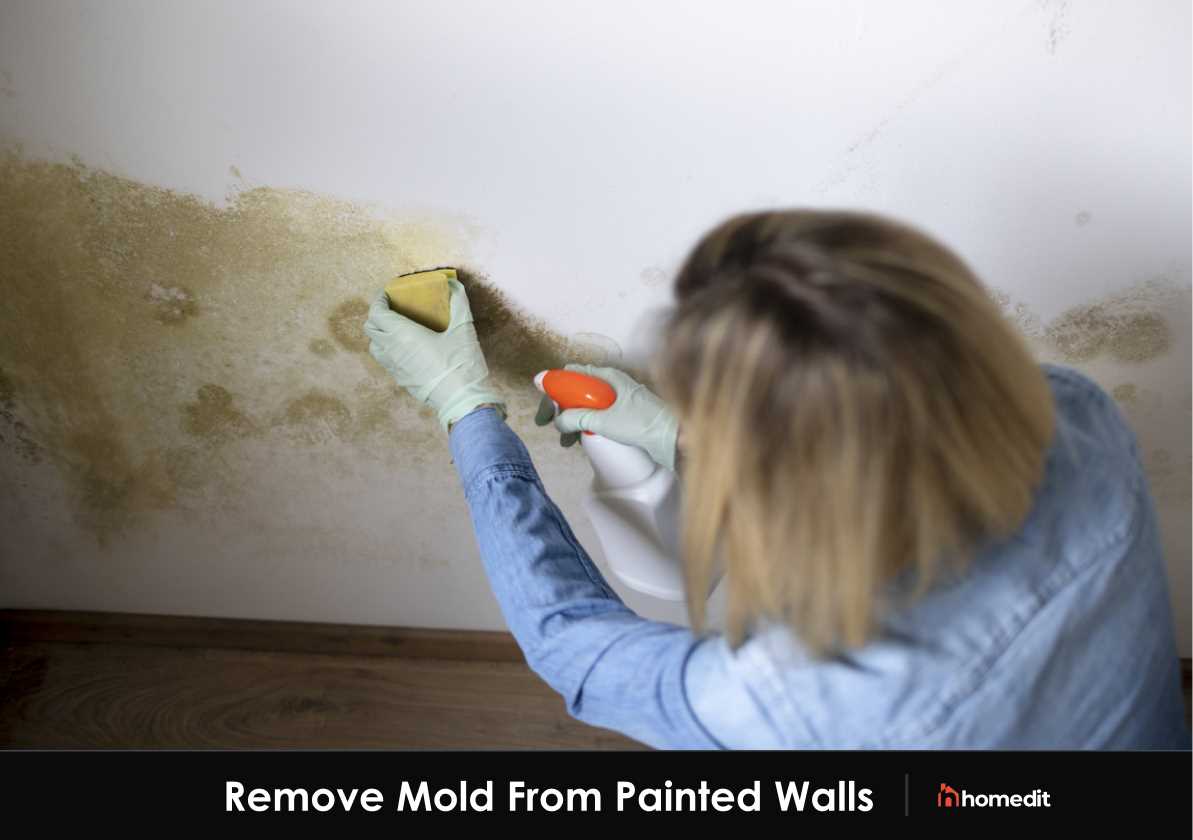
1. Prepare the Area
Before you begin cleaning the mould off your walls, it is important to prepare the area to ensure your safety.
- Open windows and doors to allow for proper ventilation.
- Wear protective gloves, goggles, and a face mask to avoid contact with the mould spores.
- Cover nearby furniture and flooring with plastic sheets or drop cloths to protect them from any cleaning solutions.
2. Mix Cleaning Solution
Next, you will need to prepare a cleaning solution to effectively remove the mould from your walls.
- In a bucket, combine equal parts of water and bleach.
- Alternatively, you can use a commercial mould and mildew cleaner.
3. Test the Solution
Before applying the cleaning solution to the entire wall, it is important to test it on a small, inconspicuous area.
- Apply a small amount of the solution to the test area and wait for a few minutes.
- Check for any adverse reactions, such as discoloration or damage to the wall surface.
- If there are no negative effects, you can proceed with cleaning the entire wall.
4. Apply the Cleaning Solution

Using a sponge or a cloth, apply the cleaning solution to the mouldy areas of the wall.
- Start from the top and work your way down.
- Gently scrub the mouldy spots, applying enough pressure to remove the mould but not damage the wall surface.
5. Rinse the Wall
After the mould has been cleaned off, rinse the wall with clean water to remove any residue.
- Dampen a clean sponge or cloth with water.
- Gently wipe down the entire wall to remove the cleaning solution.
6. Dry the Wall
Once the wall has been rinsed, allow it to dry completely to prevent mould growth.
- Open windows or use fans to improve air circulation and aid in the drying process.
- Check for any signs of moisture or dampness and address them immediately to prevent future mould growth.
7. Prevent Future Mould Growth
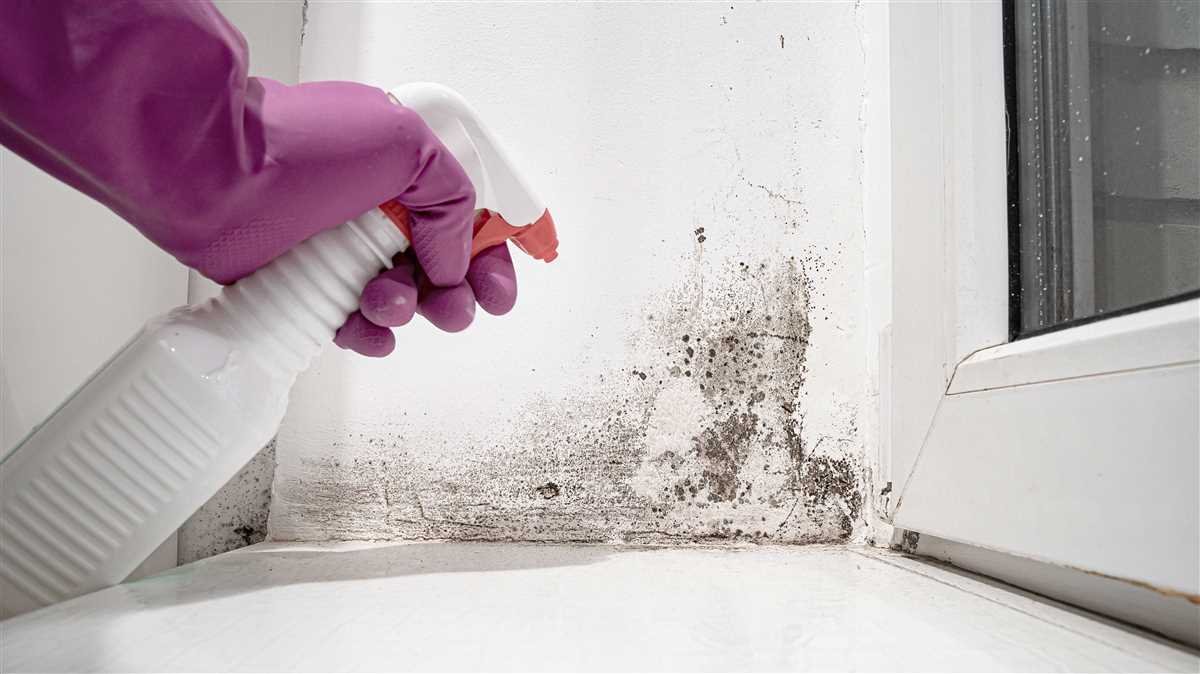
To prevent mould from recurring on your walls, take some preventive measures:
- Control humidity levels in your home by using dehumidifiers or proper ventilation.
- Fix any leaks or sources of moisture that may be contributing to mould growth.
- Regularly clean and inspect your walls for any signs of mould or moisture.
Identifying the Type of Mould and Its Root Causes
Before you start cleaning mould off your walls, it is important to first identify the type of mould and understand its root causes. This knowledge will help you determine the most effective cleaning method and prevent future mould growth.
1. Visual Inspection
Begin by visually inspecting the mould on your walls. Look for signs of different mould types, such as black, green, or white spots. Pay attention to the texture and any odor associated with the mould.
2. Common Types of Mould
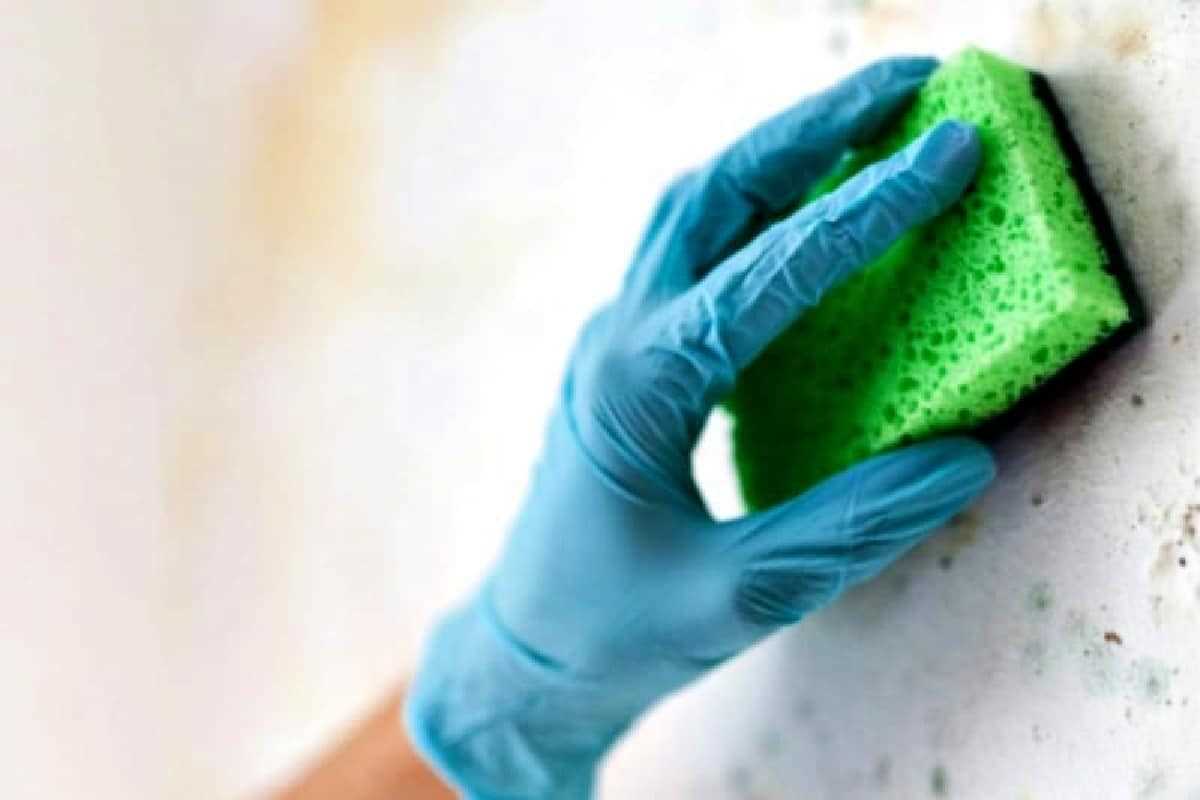
There are several common types of mould that can grow on walls, including:
- Black mould (Stachybotrys chartarum): This type of mould is black in color and usually slimy to the touch. It thrives in areas with high humidity and poor ventilation.
- Green mould (Aspergillus and Penicillium): Green mould is often found in damp conditions and can have a fuzzy or powdery appearance.
- White mould (Cladosporium): White mould is typically powdery and can grow on various surfaces, including walls.
3. Root Causes of Mould Growth
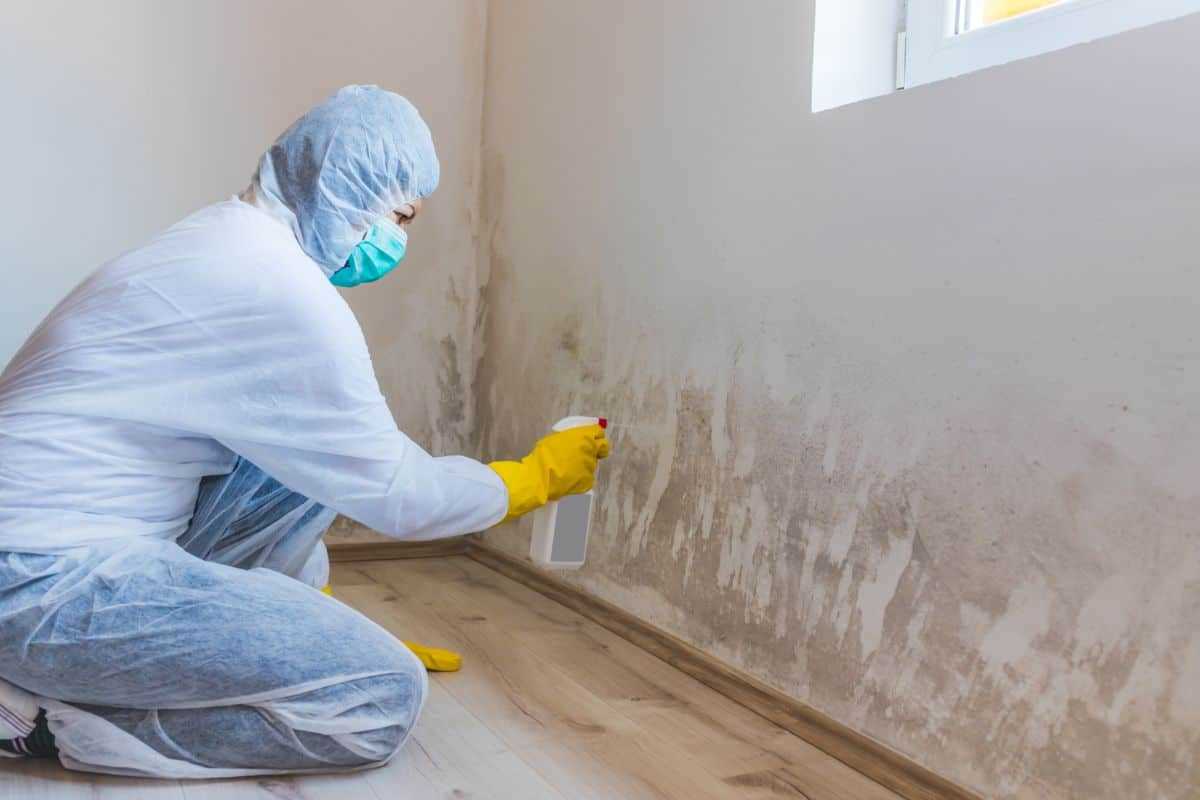
Mould growth is usually a result of excess moisture and poor ventilation. Some common root causes include:
- Poor ventilation in bathrooms, kitchens, or other areas with high humidity.
- Condensation on walls due to temperature differences between indoor and outdoor environments.
- Leaking pipes, roof, or windows that cause water intrusion.
- Dampness or water damage caused by flooding or leaks.
4. Testing for Toxic Mould
If you suspect the mould on your walls to be toxic, it is recommended to seek professional help. Professional mould inspectors can conduct tests to determine the exact type of mould present and provide guidance on the appropriate steps to take for safe removal.
5. Prevention is Key
Once you have identified the type of mould and its root causes, it is essential to address the underlying issues to prevent future mould growth. This may involve improving ventilation, fixing leaks, reducing humidity levels, and using mould-resistant paint or materials.
| Step | Actions |
|---|---|
| 1 | Visually inspect the mould on your walls. |
| 2 | Identify the common types of mould. |
| 3 | Determine the root causes of mould growth. |
| 4 | Consider testing for toxic mould if necessary. |
| 5 | Take preventative measures to avoid future mould growth. |
FAQ
What is mould and why is it dangerous?
Mould is a type of fungus that grows in damp and humid environments. It can be dangerous because it releases spores into the air that can cause respiratory problems, allergies, and other health issues.
What are the signs of mould on walls?
Signs of mould on walls include black or green spots, a musty or earthy smell, peeling or bubbling paint, and discoloration of the wall surface.
How can I prevent mould growth on walls?
To prevent mould growth on walls, it is important to keep the area dry and well-ventilated. This can be done by using dehumidifiers, fixing any water leaks, ensuring proper insulation, and regularly cleaning and drying the walls.
What are some effective ways to clean mould off walls?
Some effective ways to clean mould off walls include using a mixture of bleach and water, vinegar, hydrogen peroxide, or a commercial mould remover. It is important to scrub the affected area thoroughly and ensure proper ventilation while cleaning.
Can I use natural remedies to clean mould off walls?
Yes, natural remedies such as vinegar and hydrogen peroxide can be effective in cleaning mould off walls. They are non-toxic alternatives to harsh chemicals and can be equally effective in killing mould spores.
When should I call a professional for mould removal?
You should call a professional for mould removal if the mould covers a large area, is persistent despite cleaning efforts, or if you have underlying health conditions that may be aggravated by exposure to mould. A professional will have the necessary expertise and equipment to safely remove the mould.













